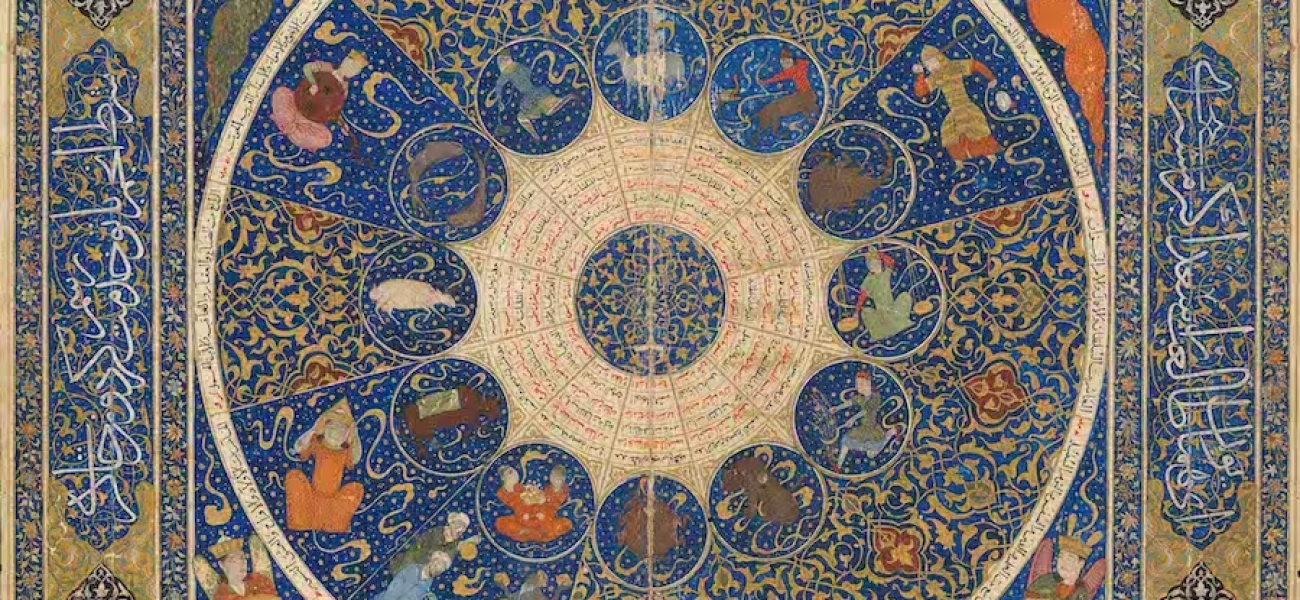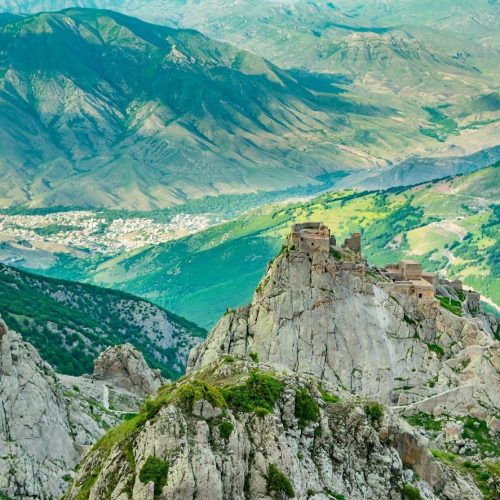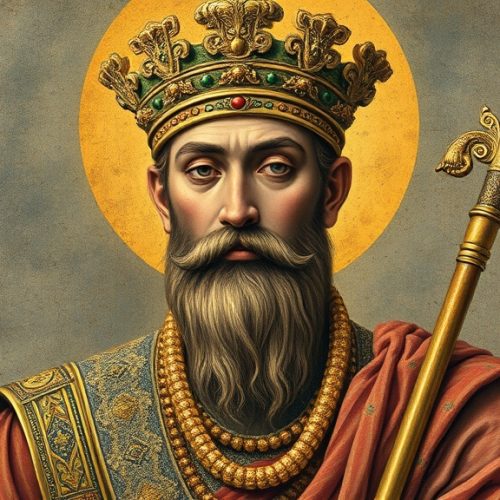In the heart of Iran’s historical and cultural legacy lies a distinctive calendar system that has withstood the test of time—the Jalali calendar. As a nation deeply rooted in ancient traditions and marked by a rich historical tapestry, Iran boasts not only the Jalali calendar but also other timekeeping systems, including the Solar Hijri calendar. This research article aims to explore the intricacies of the Jalali calendar while shedding light on its counterparts in the Iranian chronology.
The Jalali Calendar: An Overview
Astronomical Precision
The Jalali calendar’s departure from traditional lunar-based systems was a pioneering move towards astronomical precision. Conceived by renowned mathematician and astronomer Omar Khayyam, the calendar was designed to synchronize with the solar year, offering a more accurate representation of Earth’s orbit around the sun. This commitment to astronomical precision marked a significant leap in timekeeping methodology during the 11th century.
Leap Years and Intercalary Days
One of the notable features of the Jalali calendar is its incorporation of leap years to address the fractional days that accumulate over time. By introducing an additional day approximately every four years, the calendar corrects for the slight discrepancy between the 365-day calendar year and the actual time it takes for the Earth to complete its orbit around the sun. This leap year system showcases the calendar’s commitment to maintaining accuracy over an extended period.
In addition to leap years, the Jalali calendar utilizes intercalary days, allowing for further adjustments to align with the solar year. This dynamic approach underscores the calendar’s adaptability, ensuring that cultural and religious observances coincide with the natural rhythms of the sun.
Cultural Significance of Months
Each month within the Jalali calendar carries cultural and historical significance, intertwining the temporal fabric with the rich tapestry of Iran’s heritage. For instance, Farvardin, the first month, marks the beginning of spring, symbolizing renewal and fertility. Khordad, the third month, is associated with the birth of the revered Zoroastrian deity, Ardeshir. The names of the months serve as a testament to the deep-rooted connection between the Jalali calendar and Iran’s cultural legacy.
Cultural Observances and Festivities
The Jalali calendar not only serves as a pragmatic timekeeping system but also plays a pivotal role in shaping cultural observances and festivities. Many traditional Iranian celebrations, such as Nowruz, the Persian New Year, are intricately tied to specific dates within the Jalali calendar. Nowruz, celebrated during the vernal equinox, marks the beginning of the Jalali calendar year and is a testament to the enduring cultural significance embedded within the temporal framework.
Architectural Influence
Beyond its role in daily life and festivities, the Jalali calendar has also left its imprint on Iranian architecture. Historic structures and monuments often incorporate elements that reflect the calendar’s significance. Sundials, for instance, were employed as a practical means of aligning with the solar calendar, showcasing the seamless integration of the temporal system into various facets of Iranian culture.
Legacy and Contemporary Usage
While the Jalali calendar has ancient roots, it continues to hold relevance in contemporary Iran. Its usage extends beyond cultural observances to governmental and administrative spheres, contributing to the organizational fabric of the nation. The calendar, with its precise timekeeping and rich cultural connections, stands as a bridge between the historical legacy of Iran and its modern identity.
Challenges and Adaptations
Despite its enduring legacy, the Jalali calendar has faced challenges in the contemporary era. Globalization and technological advancements have prompted discussions about potential reforms or adjustments to the calendar to enhance its alignment with international standards. However, any proposed changes must delicately balance the preservation of cultural identity with the pragmatic requirements of a rapidly evolving world.
The Jalali calendar stands as a testament to Iran’s historical depth, cultural richness, and commitment to precision in timekeeping. Its astronomical foundations, cultural significance, and adaptability showcase the intricate interplay between tradition and innovation, making it a cornerstone in understanding Iran’s temporal narrative. As the nation navigates the complexities of the modern age, the Jalali calendar remains a steadfast guide, harmonizing the echoes of the past with the demands of the present.
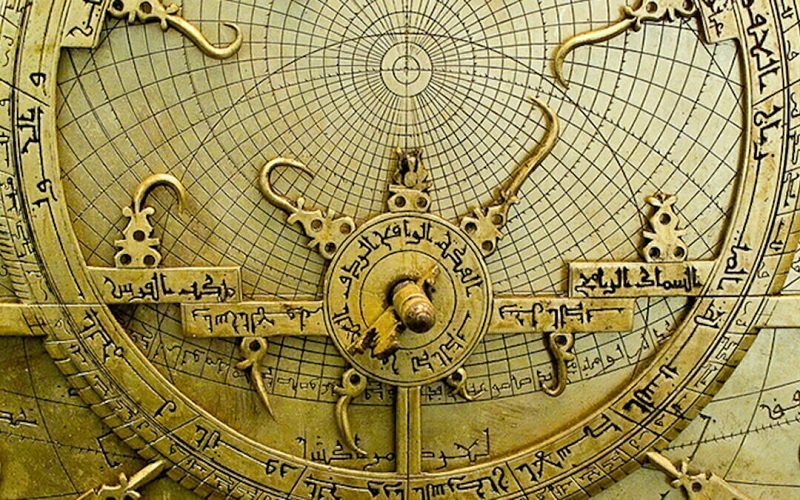
Solar Hijri Calendar: A Cultural Symbiosis
Cultural Significance of Months
Just as the Jalali calendar weaves cultural significance into the fabric of time, the Solar Hijri calendar, born out of the 20th-century socio-political landscape, fosters a profound connection between the Iranian people and their cultural heritage. Each month within the Solar Hijri calendar carries a distinctive cultural resonance, blending ancient traditions with Islamic elements.
The Solar Hijri calendar introduces a set of unique month names, each bearing historical or cultural significance. For instance, Farvardin, the first month, remains a nod to the Zoroastrian heritage, symbolizing the arrival of spring and renewal. The month of Ramadan, with its sacred significance in Islam, marks a period of fasting and spiritual reflection. The integration of both pre-Islamic and Islamic cultural elements exemplifies the calendar’s role as a bridge between Iran’s rich historical past and its present Islamic identity.
Religious Observances and Festivals
The Solar Hijri calendar plays a pivotal role in shaping religious observances and festivals in Iran. As an Islamic calendar, it is intimately connected to the lunar phases, influencing the timing of significant religious events. Ramadan, the month of fasting, is determined by the lunar calendar, and its commencement is eagerly awaited each year, signifying a period of spiritual introspection, communal unity, and charitable activities.
Eid al-Fitr, marking the end of Ramadan, and Eid al-Adha, the festival of sacrifice, are prominent celebrations whose occurrence is intricately tied to the lunar cycle. These religious festivities become communal expressions of faith, with families and communities coming together to share in the joyous spirit fostered by the Solar Hijri calendar.
Leap Years and the Islamic Calendar
Similar to the Jalali calendar, the Solar Hijri calendar incorporates leap years to address the slight misalignment between the lunar and solar cycles. This adjustment ensures that religious observances, particularly those tied to lunar phases, remain in sync with the natural rhythms of the celestial bodies. The inclusion of leap years in the Solar Hijri calendar showcases a pragmatic approach to maintaining accuracy, striking a balance between the lunar and solar elements.
Cultural Synthesis in Naming Conventions
What distinguishes the Solar Hijri calendar is its intentional synthesis of cultural and Islamic elements in naming the months. This approach reflects the nuanced identity of contemporary Iran, where ancient cultural traditions coexist with Islamic principles. The month of Muharram, for example, holds historical significance as it marks the tragic events of the Battle of Karbala, a major observance for Shiite Muslims.
Modern Adaptations and Cultural Identity
In the modern era, the Solar Hijri calendar serves as a unifying force, encompassing both Iran’s pre-Islamic cultural identity and its Islamic heritage. While rooted in tradition, the calendar has adapted to contemporary needs, contributing to a sense of continuity and stability in the face of social, political, and technological changes.
Commemorations and National Events
Beyond religious observances, the Solar Hijri calendar plays a role in commemorating national events and anniversaries. Days such as the Islamic Revolution’s Victory Day, marking the establishment of the Islamic Republic in 1979, are anchored in the solar calendar. These commemorations become not just historical milestones but integral components of Iran’s contemporary cultural and political identity.
Calendar as a Cultural Marker
The Solar Hijri calendar, with its synthesis of cultural and Islamic elements, serves as more than just a chronological tool. It becomes a cultural marker, reflecting the dynamic interplay between Iran’s ancient heritage and its present Islamic identity. As Iran continues to evolve in the 21st century, the Solar Hijri calendar stands resilient, embodying the cultural symbiosis that defines the nation.
In summary, the Solar Hijri calendar emerges as a testament to Iran’s ability to synthesize diverse cultural elements, creating a temporal framework that bridges the historical richness of ancient Persia with the religious and cultural ethos of Islam. Its adaptability, cultural significance, and role in shaping both religious observances and national commemorations underscore its vital position in Iran’s contemporary cultural landscape.
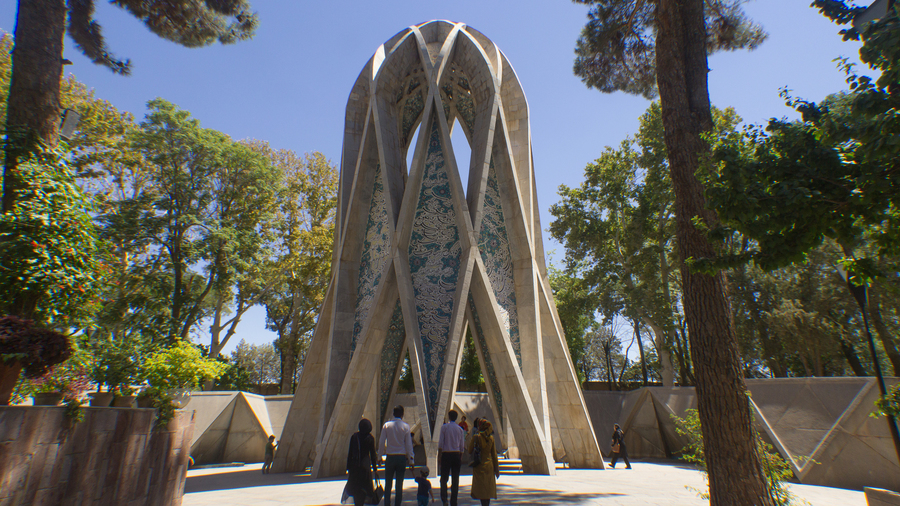
Comparative Analysis
Cultural Confluence: Jalali vs. Solar Hijri
The Jalali and Solar Hijri calendars, while both embedded in Iran’s temporal tapestry, exhibit nuanced differences that mirror the cultural evolution of the nation.
Historical Roots and Evolution:
– Jalali Calendar: Rooted in the 11th century Seljuk era, the Jalali calendar represents a pivotal moment in Iran’s history. Its historical ties to the Seljuk Sultan Jalal al-Din Malik Shah I and the scholarly endeavors of Omar Khayyam underscore its deep connection to pre-Islamic Persia.
– Solar Hijri Calendar: Instituted in 1925 under Reza Shah’s reign, the Solar Hijri calendar represents a deliberate effort to modernize Iran’s temporal framework. Born out of a socio-political landscape undergoing significant transformation, it reflects a synthesis of Iran’s historical identity and the Islamic era.
Naming Conventions:
– Jalali Calendar: The months of the Jalali calendar carry names with direct ties to Iran’s pre-Islamic heritage. This naming convention reinforces a cultural continuity that predates the Islamic era.
– Solar Hijri Calendar: The Solar Hijri calendar introduces a set of month names that merge Iran’s Zoroastrian legacy with Islamic elements. This deliberate synthesis serves as a bridge between the ancient Persian past and the Islamic present.
Leap Years and Accuracy:
– Jalali Calendar: The Jalali calendar, with its focus on astronomical precision, incorporates leap years and intercalary days to maintain synchronization with the solar year. This approach showcases a commitment to accuracy over extended periods.
– Solar Hijri Calendar: Similarly, the Solar Hijri calendar employs leap years, demonstrating a shared commitment to accuracy. This adaptation is crucial for aligning religious observances, particularly those tied to lunar phases, with the solar calendar.
Cultural Celebrations:
– Jalali Calendar: Traditional celebrations such as Nowruz, deeply rooted in the Jalali calendar, symbolize the arrival of spring and are a testament to Iran’s ancient cultural festivities.
– Solar Hijri Calendar: Religious observances like Ramadan and Eid al-Fitr, determined by the lunar cycle within the Solar Hijri calendar, showcase the coexistence of ancient cultural traditions with Islamic practices.
Architectural Integration:
– Jalali Calendar: Historic structures often incorporate elements related to the Jalali calendar, such as sundials, showcasing the integration of temporal systems into architectural designs.
– Solar Hijri Calendar: While the architectural influence of the Solar Hijri calendar is less overt, its presence in daily life and cultural practices is manifested through religious observances and national commemorations.
Modern Adaptations:
– Jalali Calendar: Deeply ingrained in cultural practices, the Jalali calendar persists as a cultural and historical touchstone. Efforts to preserve its authenticity are ongoing, balancing tradition with contemporary needs.
– Solar Hijri Calendar: Instituted with a modernizing vision, the Solar Hijri calendar reflects a deliberate move toward synchronizing Iran’s temporal identity with international standards. Its adaptability echoes the nation’s ability to navigate between tradition and progress.
In essence, the Jalali and Solar Hijri calendars represent complementary facets of Iran’s cultural identity. The Jalali calendar, deeply rooted in pre-Islamic Persia, preserves ancient traditions, while the Solar Hijri calendar, born of a transformative era, exemplifies Iran’s ability to synthesize diverse cultural elements. Together, these calendars embody the intricate interplay between history, culture, and religion in shaping Iran’s temporal narrative.
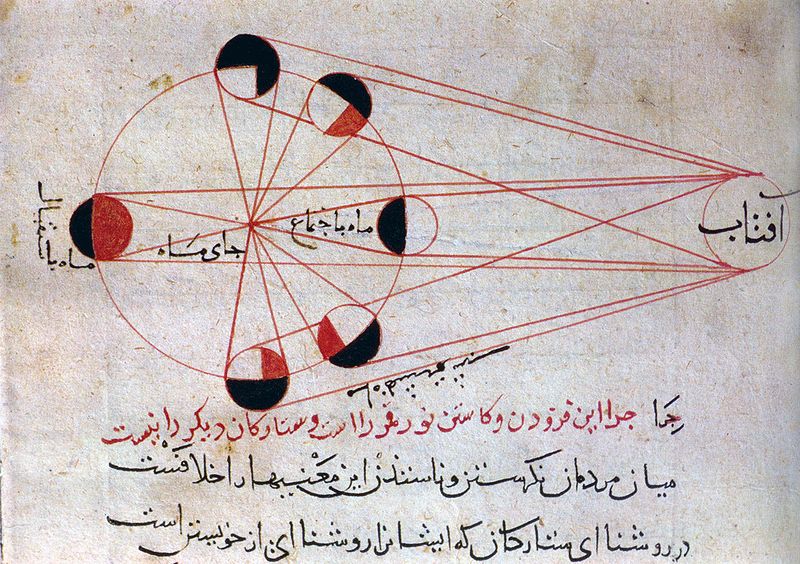
Al-Biruni, Public domain, via Wikimedia Commons.
The Future of Iranian Calendars: Tradition and Modernity
The future trajectory of Iranian calendars, encompassing both the Jalali and Solar Hijri systems, unfolds against a backdrop where tradition intertwines with the demands of a rapidly evolving world. As Iran strides into the future, the calendars serve as guardians of cultural identity, yet face the challenge of adapting to the changing dynamics of a globalized society.
Preservation of Cultural Identity:
In the face of globalization and technological advancements, there’s a growing emphasis on preserving the cultural identity embedded within the Jalali and Solar Hijri calendars. Efforts to safeguard the authenticity of these calendars involve initiatives to document and promote their historical and cultural significance. Institutions, scholars, and cultural enthusiasts collaborate to ensure that the rich narratives encapsulated within the calendars are passed down to future generations.
Modern Adaptations and Global Integration:
The challenge lies in balancing the preservation of tradition with the need for global integration. While the Jalali calendar remains deeply rooted in Iran’s historical and cultural fabric, there are ongoing discussions about potential reforms or adaptations to enhance its alignment with international standards. The Solar Hijri calendar, instituted with a modernizing vision, reflects Iran’s openness to global norms and signifies its adaptability to contemporary needs.
Technological Advancements and Digital Integration:
The advent of technology brings both opportunities and challenges for Iranian calendars. Digital platforms and applications offer new avenues for disseminating information about cultural observances, festivals, and historical events tied to these calendars. However, this digital landscape also necessitates careful consideration to ensure that the essence of these temporal systems is preserved amid the fast-paced nature of the online world.
Educational Initiatives:
The future resilience of Iranian calendars hinges on educational initiatives that instill an understanding of their cultural and historical significance. Integrating the study of calendars into educational curricula fosters a sense of pride and connection among younger generations. This not only ensures the continuity of cultural practices but also promotes a broader awareness and appreciation of Iran’s unique temporal identity on a global scale.
Interplay with Global Calendars:
As Iran engages in global exchanges, there’s a delicate interplay between its traditional calendars and the widely adopted Gregorian calendar. This interaction is especially evident in international business, diplomacy, and academia. Striking a balance between the requirements of global communication and the preservation of cultural temporal frameworks becomes crucial for maintaining Iran’s distinct identity on the world stage.
Collaborative Cultural Diplomacy:
The future of Iranian calendars is also shaped by collaborative cultural diplomacy. Initiatives that showcase the beauty and significance of these temporal systems on the global stage foster cross-cultural understanding. Exchanges, exhibitions, and cultural events centered around the calendars contribute to a shared appreciation of Iran’s rich cultural heritage.
Continued Relevance in Daily Life:
Ultimately, the enduring relevance of Iranian calendars depends on their seamless integration into daily life. Whether marking religious observances, cultural celebrations, or national events, these calendars must continue to resonate with the lived experiences of the Iranian people. Their adaptability to the evolving needs of society ensures that they remain not just relics of the past but living components of Iran’s contemporary cultural landscape.
The future of Iranian calendars is a dynamic interplay between tradition and modernity. Navigating this path requires a thoughtful approach that preserves the essence of these temporal systems while embracing the opportunities and challenges presented by a changing world. As Iran charts its course into the future, the calendars stand as steadfast guardians of a cultural legacy, inviting the world to appreciate the intricate tapestry of time woven within the boundaries of an ancient and resilient nation.
Embracing Temporal Diversity
In the tapestry of Iran’s temporal landscape, the coexistence of the Jalali and Solar Hijri calendars stands as a testament to the nation’s ability to embrace diversity within its own history. These calendars, with their distinct origins and evolutions, converge to paint a nuanced picture of Iran’s past, present, and future.
Cultural Resilience:
The Jalali calendar, with its roots reaching back to the Seljuk era, remains a symbol of cultural resilience. Its steadfast presence in daily life, cultural celebrations, and architectural elements underscores its enduring significance. The commitment to astronomical precision, with leap years and intercalary days, reflects a dedication to preserving an ancient temporal legacy.
Synthesis of Tradition and Modernity:
Concurrently, the Solar Hijri calendar, a product of 20th-century modernization efforts, encapsulates the spirit of synthesis between tradition and modernity. By amalgamating pre-Islamic cultural elements with Islamic principles, it embodies Iran’s dynamic identity—a nation that acknowledges its historical roots while navigating the complexities of a contemporary world.
Temporal Guardians of Cultural Identity:
Both calendars, with their unique naming conventions, serve as temporal guardians of Iran’s rich cultural identity. They dictate the timing of religious observances, cultural celebrations, and national commemorations, weaving the threads of history into the fabric of daily life. These temporal markers become essential not only for practical timekeeping but for fostering a deep sense of cultural continuity.
Challenges and Opportunities:
As Iran looks towards the future, the calendars face challenges posed by globalization, technological advancements, and the need for global integration. However, these challenges also present opportunities for educational initiatives, technological adaptations, and collaborative cultural diplomacy. The adaptability of the calendars becomes a key asset, allowing them to remain relevant in a world that continues to evolve.
A Unified Chronological Tapestry:
In the intricate dance between the Jalali and Solar Hijri calendars, Iran weaves a unified chronological tapestry that transcends temporal boundaries. The cultural symbiosis embodied by these calendars reflects the nation’s resilience in the face of historical shifts, geopolitical transformations, and the inexorable march of time.
Invitation to Appreciate Diversity:
In conclusion, the Iranian calendars extend an invitation to the world to appreciate the diversity encapsulated within the temporal frameworks of a nation. Beyond the practical function of timekeeping, they are vessels of cultural narratives, repositories of historical echoes, and conduits to understanding the multifaceted identity of Iran. As the calendars continue to mark the passage of time, they stand as eternal witnesses to a nation’s unwavering commitment to preserving its rich cultural heritage in the face of a changing world.
In the heart of Iran’s temporal story, the Jalali and Solar Hijri calendars remain not just tools for measuring days but storytellers, narrating the epic journey of a nation through the epochs of history. The resonance of their tick-tock echoes far beyond the minutes and seconds, reverberating through the corridors of cultural legacy—a timeless testament to Iran’s enduring spirit.

